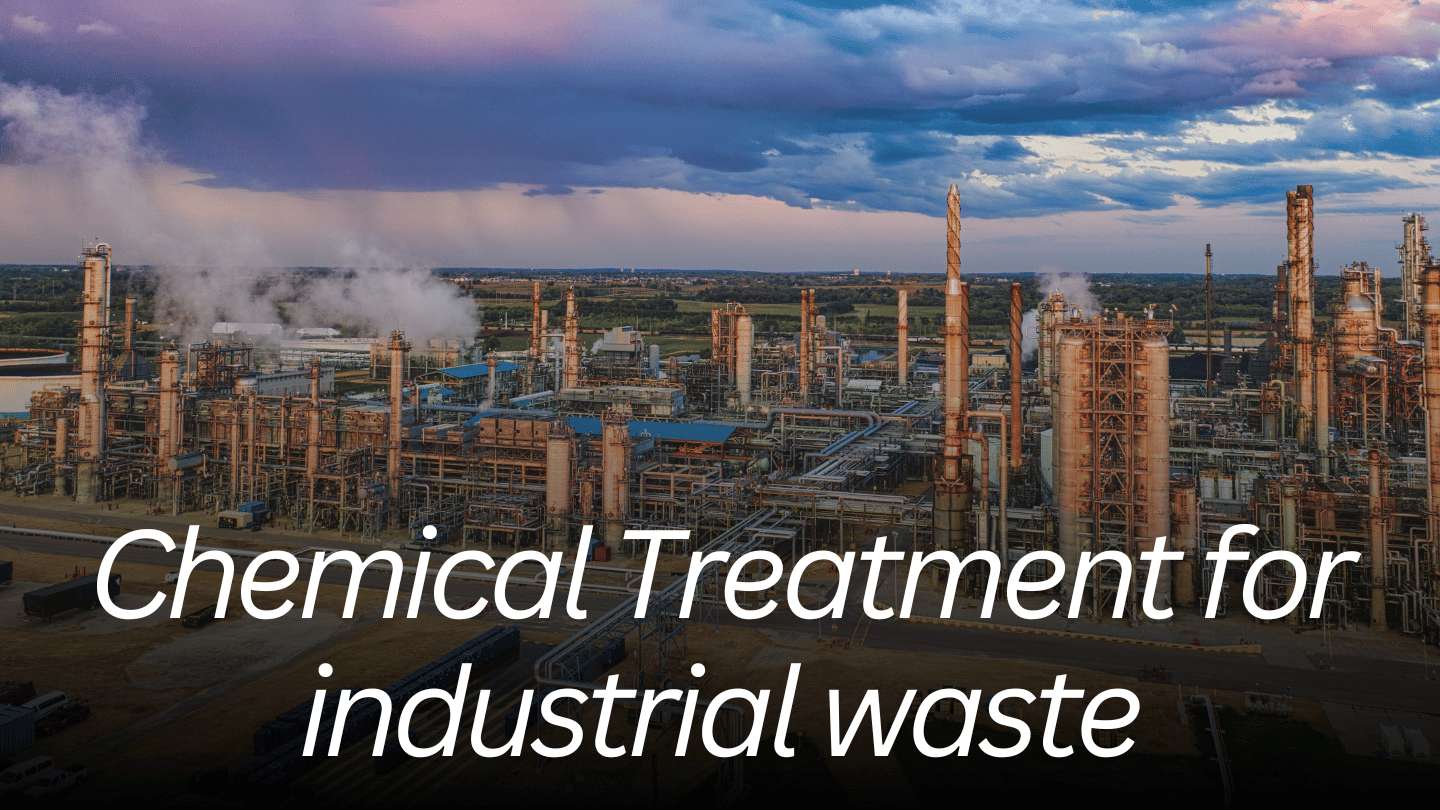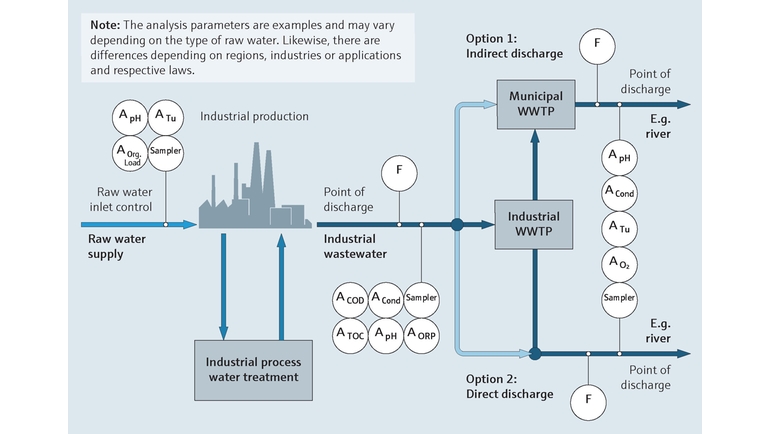Challenges and Solutions in Industrial Waste Water Therapy
The therapy of commercial wastewater provides a multifaceted array of obstacles, varying from rigid regulative compliance to the intricacies of price monitoring and technological limitations. The irregularity in waste make-up even more complicates the performance of typical treatment methods, often resulting in risen functional expenditures.
Regulatory Conformity Difficulties
How can commercial facilities browse the complicated landscape of regulative conformity in wastewater therapy? The regulatory structure governing wastewater monitoring is diverse, frequently differing by jurisdiction and kind of market. Facilities has to stick to federal, state, and regional regulations that determine effluent quality criteria, discharge limits, and surveillance requirements. Failing to comply can cause severe fines, including penalties and operational shutdowns.
To successfully take care of these compliance difficulties, centers should carry out durable monitoring and reporting systems that make sure real-time information collection and analysis. Routine audits and danger analyses can identify prospective conformity voids, allowing for positive changes in therapy processes. Employee training programs concentrating on regulative expertise and ideal practices are important to promote a society of conformity within the organization.
Furthermore, involving with regulative firms can offer beneficial insights and make clear ambiguous guidelines. Facilities may likewise take advantage of consulting with ecological experts who concentrate on wastewater treatment compliance, making certain that they stay abreast of advancing policies. By embracing these approaches, industrial facilities can not just fulfill compliance demands however additionally enhance their operational effectiveness and ecological stewardship.
Price and Economic Barriers
Navigating governing conformity in wastewater therapy frequently provides substantial economic difficulties for commercial centers. The prices related to executing needed therapy modern technologies, keeping compliance with stringent policies, and handling operational costs can be intimidating. Lots of companies encounter high first resources expenses for the building and construction or updating of wastewater therapy plants, which might stress budget plans, particularly for medium-sized and little business.
Moreover, continuous operational expenses, including chemical, upkeep, and labor inputs, contribute to the financial concern. The unpredictability of fluctuating power rates and the prospective requirement for additional financial investments to fulfill advancing guidelines worsen these economic pressures. In a lot of cases, the absence of monetary incentives or assistance from federal government bodies makes it much more challenging for organizations to validate investments in advanced therapy systems.
Furthermore, the economic stability of wastewater treatment solutions is often examined, especially for industries with limited revenue margins. Consequently, it is critical for commercial facilities to discover economical techniques, such as taking on ingenious financing choices, participating in collaborations, and leveraging emerging modern technologies that can assist minimize these economic obstacles while making sure conformity with environmental criteria.

Technological Limitations
Various technical constraints impede the effectiveness of commercial wastewater therapy processes. One substantial challenge is the insufficiency of existing treatment technologies to resolve complicated contaminants. Several traditional methods, such as turned on sludge and chemical rainfall, deal with the elimination of emerging pollutants, consisting of microplastics and drugs. This restriction frequently causes the discharge of inadequately dealt with water, which can have damaging environmental influences.
Additionally, the scalability of treatment modern technologies positions an obstacle. While some advanced approaches, like membrane filtering or innovative oxidation, show pledge in regulated environments, their application on a bigger scale can be practically challenging and excessively costly. Upkeep and operational complexities additionally make complex the adoption of these systems, particularly for smaller sized sectors with limited technical know-how.
The assimilation of real-time monitoring innovations likewise continues to be insufficient in many treatment facilities. Without efficient surveillance systems, drivers can not properly analyze treatment efficiency or discover prospective failings, bring about irregular effluent high quality. Addressing these technical constraints via study and advancement, together with investment in innovative solutions, is crucial for enhancing the efficiency of commercial wastewater treatment and guaranteeing regulatory conformity.
Irregularity in Waste Structure
In the realm of commercial wastewater therapy, the variability in waste composition offers a powerful difficulty. Industries generate wastewater with varied attributes, influenced by factors such as manufacturing processes, basic materials, and operational techniques. This diversification complicates the therapy process, as conventional systems often battle to efficiently address the variety of pollutants existing.
For instance, wastewater from food handling may contain high degrees of organic issue, while effluents from chemical manufacturing can include unsafe compounds and hefty metals. This difference requires versatile treatment strategies to guarantee conformity with environmental laws and safeguard public wellness. Furthermore, variations in waste composition can happen over time, influenced by adjustments in production routines, upkeep activities, or the intro of brand-new products.

Ingenious Treatment Solutions
Ingenious therapy services are essential for attending to the complexities of industrial wastewater monitoring. Conventional approaches frequently drop brief in efficiently getting rid of a wide variety of pollutants, specifically in facilities with diverse effluent streams. Current advancements concentrate on incorporating cutting-edge innovations to boost therapy efficiency and sustainability.
One appealing strategy is using advanced oxidation procedures (AOPs), which utilize effective oxidants to deteriorate organic contaminants. AOPs, consisting of photocatalysis and ozonation, can significantly lower toxic substances and enhance effluent high quality. In addition, membrane layer bioreactor (MBR) technology has over at this website acquired traction, integrating biological therapy with membrane layer filtering, causing high-grade effluent and reduced footprint.
Another innovative service is the application of resource healing systems. Methods like anaerobic digestion not only treat wastewater but also produce biogas, which can be harnessed as a renewable energy resource. The fostering of man-made intelligence and device learning versions can maximize treatment processes by forecasting variants in wastewater structure, thereby boosting functional efficiency.
These innovative remedies not only address regulatory conformity however also advertise environmental sustainability, paving the means for a much more resilient and reliable commercial community.
Conclusion
In verdict, attending to the challenges of commercial wastewater treatment calls for a multifaceted strategy that integrates governing compliance, price administration, and technical developments. Cutting-edge remedies, such as innovative oxidation processes and membrane layer bioreactor innovation, deal my latest blog post pathways to site improve therapy effectiveness. Furthermore, real-time tracking systems and joint engagement with governing agencies can promote lasting practices while alleviating financial pressures. A dedication to continuous improvement in therapy techniques will ultimately contribute to the efficient monitoring of commercial wastewater and environmental management.
The therapy of commercial wastewater provides a diverse variety of obstacles, varying from rigid governing conformity to the ins and outs of price monitoring and technical restrictions. Industrial Waste Water Treatment.Navigating regulative compliance in wastewater treatment frequently presents significant economic obstacles for commercial centers. Dealing with these technological limitations through study and growth, together with investment in innovative solutions, is crucial for boosting the effectiveness of industrial wastewater therapy and making certain regulative compliance
Wastewater treatment centers need to invest in durable tracking systems and flexible therapy modern technologies capable of accommodating differing influent qualities.In conclusion, resolving the difficulties of industrial wastewater therapy needs a multifaceted technique that integrates governing conformity, cost monitoring, and technological innovations.
Comments on “Industrial Waste Water Treatment-- Customized Solutions for Effective Wastewater Treatment”